What are solenoid valves?
Solenoid valves are used to convert electrical energy into mechanical energy.
Solenoid valves have quite a distinctive look about them. Once the valve is installed, the top part is the solenoid, and the bottom part is the valve, therefore making a solenoid valve.
The solenoid coil on the top is used to operate the valve, by passing an electrical current through it to create an electromagnetic field and operate the valve.
This means if it is connected to a controller, it can be operated autonomously and remotely by a computer without the need for engineers to physically run around opening and closing the valves. This allows systems to run much more efficiently and safety.
View PFC various series solenoid valves
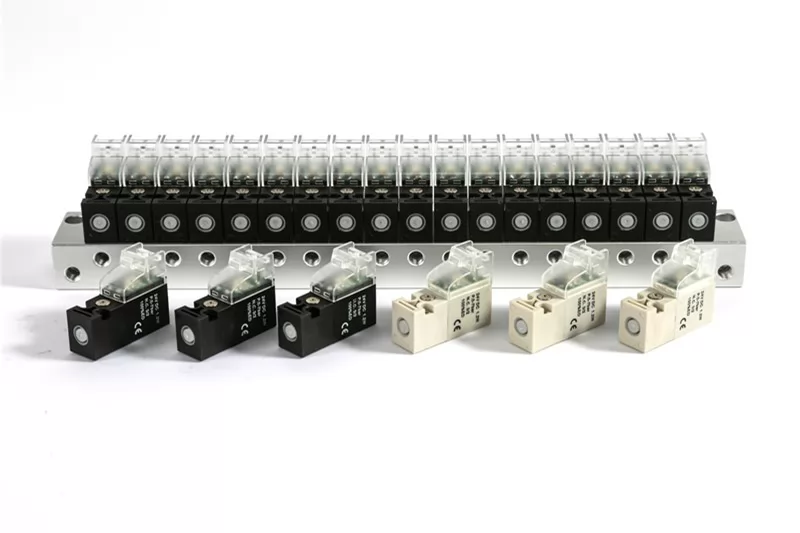 |
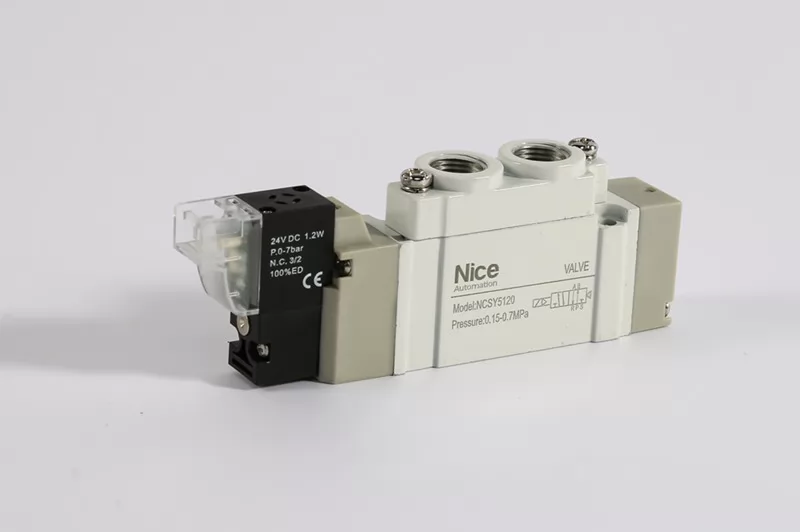 |
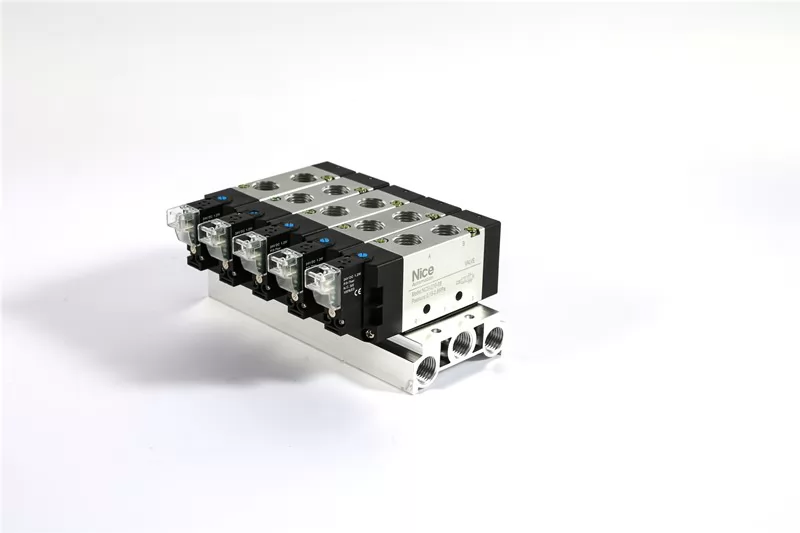 |
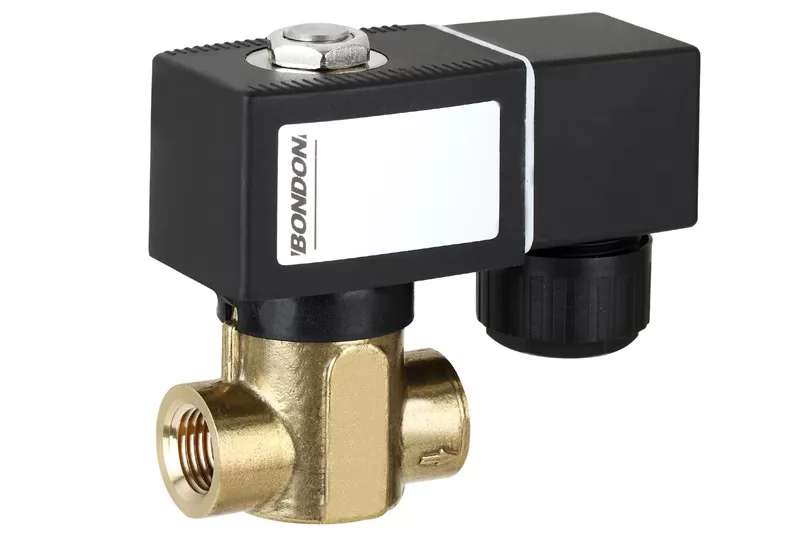 |
Where do we use solenoid valves?
The short answer is everywhere.
Solenoid valves can be found in everything, from washing machines up to space rockets. Although we’re going to focus on the industrial.
Let’s have a look at some examples.
In industrial applications, we can use these valves to precisely control the flow and mixing of fluids, For example, to pour a perfect amount of fizzy drink into a bottle on a production line.
We might also find solenoid valves being used in a production line to detect and prevent leaks.
If a sensor detects a leak from the pipe work, then a controller will tell the solenoid valve to close to shut that part of the production line off and also protect the manufacturing equipment until engineers can get there and fix it.
How do they work?
How the valve operates, depending on the required capacity and the pressure it’s working with.
We’re going to focus on the directly operated valves, which is the simplest version.
With a direct operated valve, we have the solenoid on top, which is basically a coil of wire.
When you pass an electrical current through a coil, we generate an electromagnetic field. This magnetic field is what we’ll use to control the valve.
We have two types of valves, the normally open and the normally closed type.
Let’s look at the normally closed first. Inside the valve, we have the armature, The solenoid is placed on it and completely surrounds the armature. So that it’s at the center of the magnetic field. Inside the cylinder of the armature is the plunger and spring. The spring pushes the plunger down in a normally closed type valve. Because the plunger is pushed by the spring, it will sit in the down position to close the valve indefinitely. But if the coil receives an electrical current, then it would generate an electromagnetic field, and this magnetic field passes through the plunger and will cause it to move upwards, against the spring, therefore opening the valve.
At the center of the coil, the magnetic field lines are the most compact and therefore the strongest. This is why we place the plunger in the center. Once the electrical current is stopped, Then the magnetic field disappears and the spring will force the plunger down again to close the valve.
With normally open valves, we again have the coil sitting around the armature, but this time the spring pushes the plunger in an upwards position so that the valve is always open, Unless the solenoid coil is powered on. There are a few different designs, but one of the simplest to understand is if we pass a current through the coil in the opposite direction, it again creates an electromagnetic field, but this time the filed pushes the plunger instead of pulling it. When the plunger is pushed, it will close the valve and stop the flow of fluid in the system.
When the electrical current is stopped, the spring will then force the plunger back to upwards position and open the valve again.
In this very simple version, the direction of the current flowing in the coil is what determines whether the coil produces a pulling or pushing force on the plunger.
Type of operation
1. Solenoid valves can be categorized into different groups according to operation ways.
● Direct-acting solenoid valve
Principle: When energized, the electromagnetic coil generates electromagnetic force to lift the closing member from the valve seat, and the valve opens; when the power is off, the electromagnetic force disappears, the spring presses the closing member on the valve seat, and the valve closes.
Features: It can work normally under vacuum, negative pressure and zero pressure, but the diameter is generally not more than 25mm.
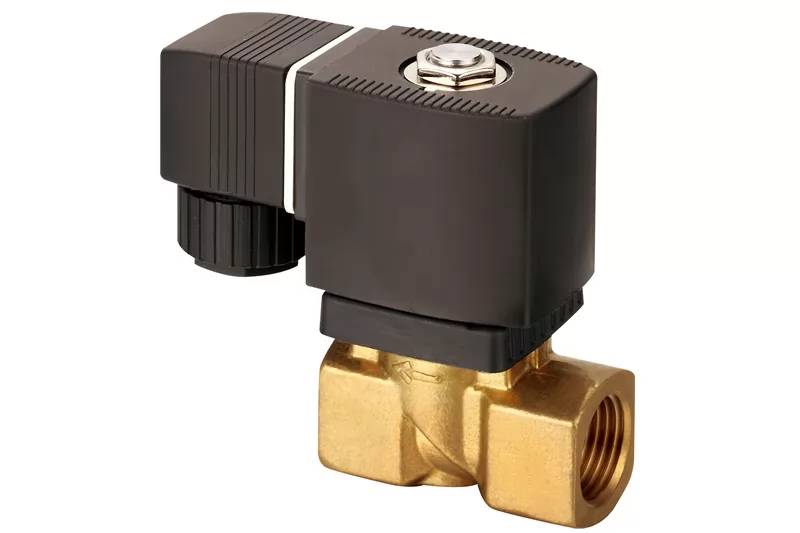 |
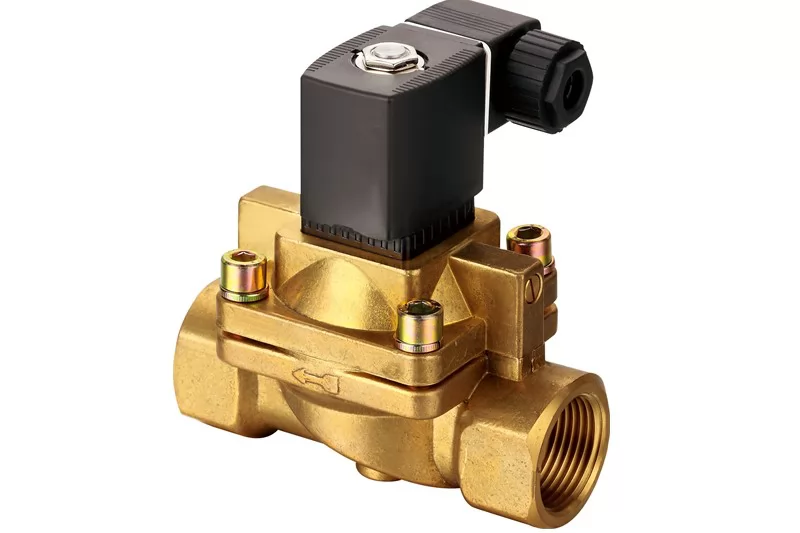 |
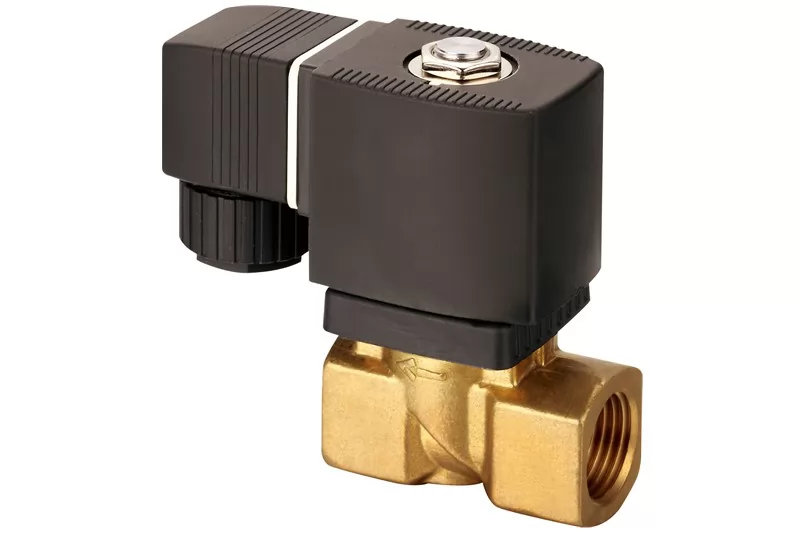 |
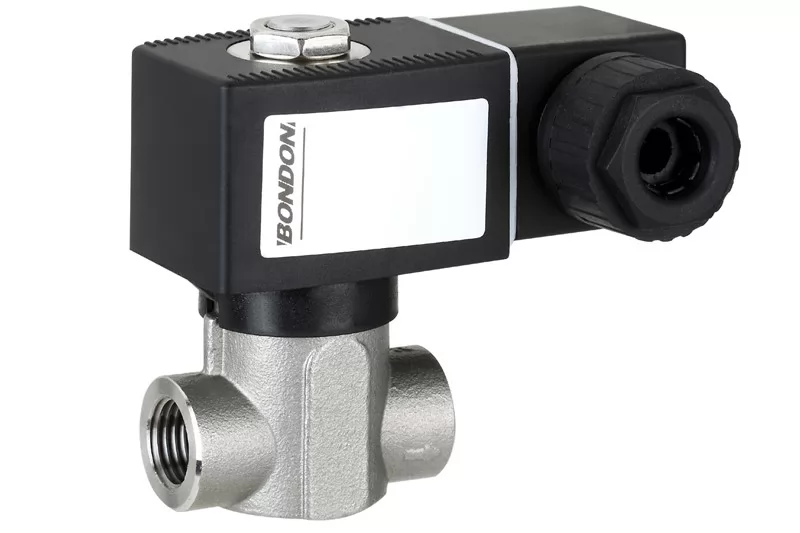 |
|
NCB-22H Series / High Pressure &Temperature Solenoid Valve (2/2 way) |
● Semi-direct acting solenoid valve
Principle: It is a combination of direct-acting and pilot-operated principle. When there is no pressure difference between the inlet and the outlet, after the power is applied, the electromagnetic force directly lifts the pilot small valve and the main valve closing part in turn, and the valve opens. When the inlet and outlet reach the starting pressure difference, after the power is turned on, the electromagnetic force pilots the small valve. The pressure in the lower chamber of the main valve rises and the pressure in the upper chamber decreases, so the main valve is pushed upwards by the pressure difference. When the power is off, the pilot valve uses a spring. Force or media pressure pushes the closing piece and moves down to close the valve.
Features: It can operate at zero pressure difference, vacuum, high pressure, but the power is large, and it must be installed horizontally.
● Pilot operated solenoid valve
Principle: When power is applied, the electromagnetic force opens the pilot hole, the pressure in the upper chamber drops rapidly, and a pressure difference between the upper and lower parts is formed around the closing member. The fluid pressure pushes the closing member to move upward and the valve opens. The hole is closed, and the inlet pressure passes through the bypass hole to quickly form a lower and upper pressure difference around the valve closing member. The fluid pressure pushes the closing member to move downward and closes the valve.
Features: The upper limit of the fluid pressure range can be arbitrarily installed (customized) but must meet the fluid pressure differential conditions.
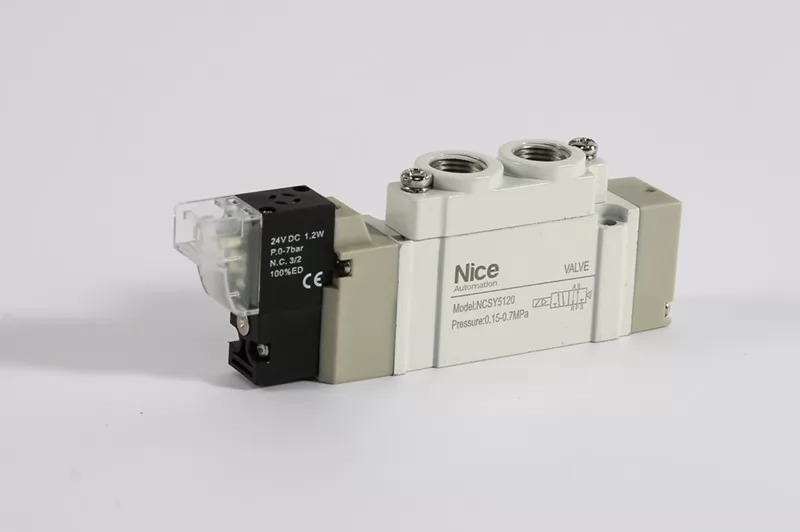 |
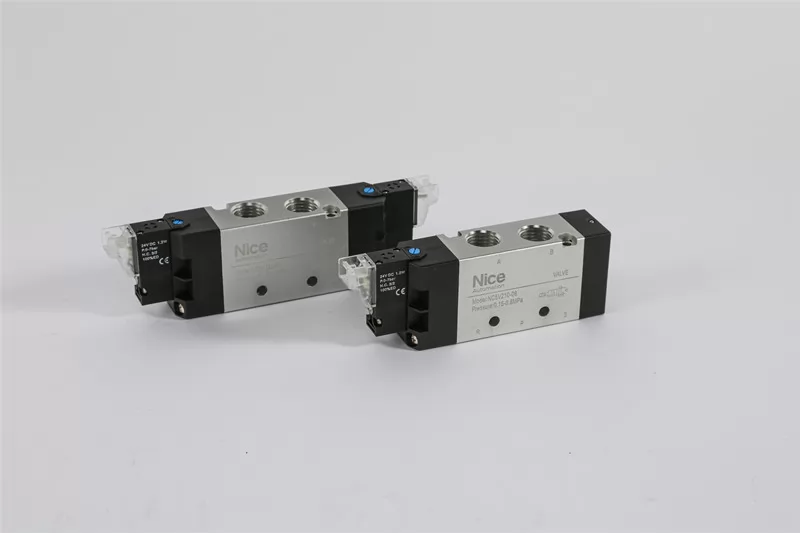 |
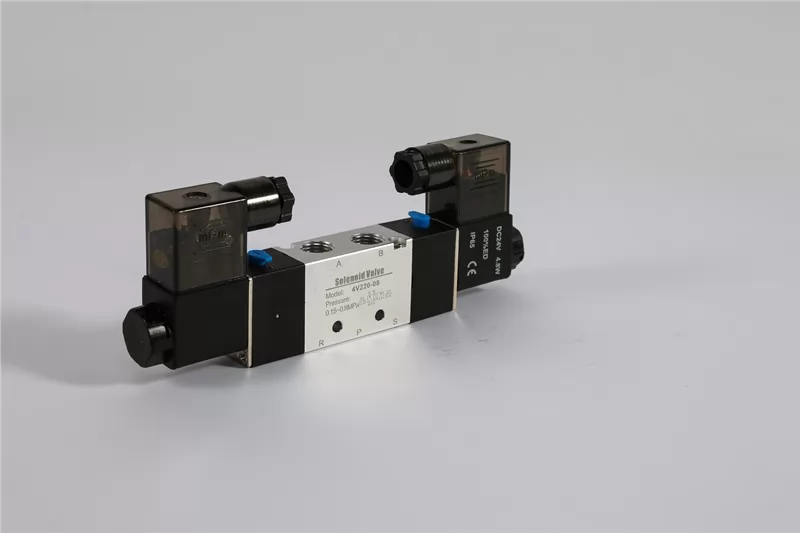 |
| NC5V200 series pneumatic solenoid vale | NC4V200 series pneumatic solenoid vale |
2. Solenoid valve also can be classified according to function
Water solenoid valve, steam solenoid valve, refrigeration solenoid valve, low temperature solenoid valve, gas solenoid valve, fire solenoid valve, ammonia solenoid valve, gas solenoid valve, liquid solenoid valve, miniature solenoid valve, pulse solenoid valve, hydraulic solenoid valve normally open solenoid valve, oil solenoid valve, DC solenoid valve, high pressure solenoid valve, explosion-proof solenoid valve, etc.

